
Janus Henderson: Euroland money data slightly better, trends still subdued
Euroland monetary trends have stabilised, suggesting that economic growth will be sustained at its recent slower pace through late 2018.
02.07.2018 | 10:04 Uhr
Euroland monetary trends have stabilised, suggesting that economic growth will be sustained at its recent slower pace through late 2018. The ECB / consensus forecast that GDP will expand at a 1.75-2% annualised rate appears over-optimistic. Real narrow money growth has fallen in Italy but is only slightly lower than in the other major economies, although a further slowdown is likely.
Annual growth rates of Euroland non-financial M1 and non-financial M3 – the preferred aggregates here – fell significantly between March 2017 and March 2018 but recovered slightly in April / May. Three-month rates of expansion, moreover, have moved above the annual growth rates and are at their highest levels since October / November 2017 – see first chart.
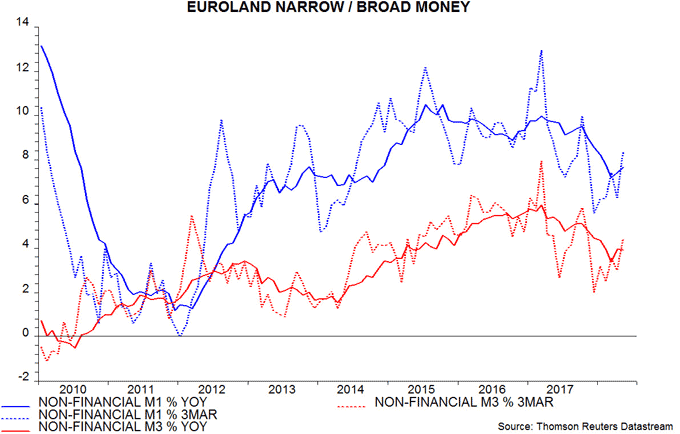
The shorter-term reacceleration is less impressive in real terms because of a rebound in consumer price inflation. Nevertheless, six-month growth rates of real non-financial M1 / M3 have stabilised recently – second chart*.
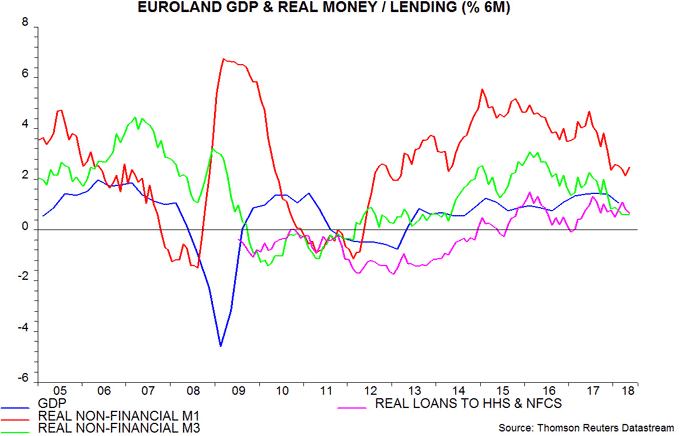
The current six-month real growth rates are similar to those prevailing in mid-2013, following which GDP expanded at an annualised rate of 1.4% through end-2014. This seems a reasonable expectation for growth over coming quarters. The latest ECB staff projections of annual average GDP increases of 2.1% in 2018 and 1.9% in 2019, by contrast, imply sequential expansion of 1.75-2% annualised.
Narrow money trends remain similar across the “big four” economies but six-month growth of real non-financial M1 deposits is now weakest in Italy, with the recent rise in Italian yield spreads suggesting a further decline – third and fourth charts.
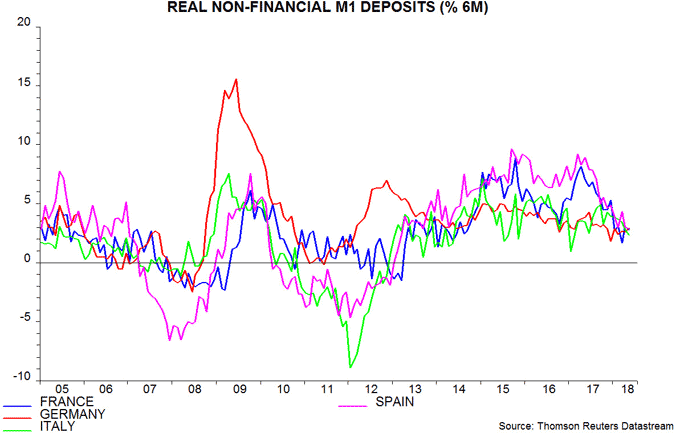
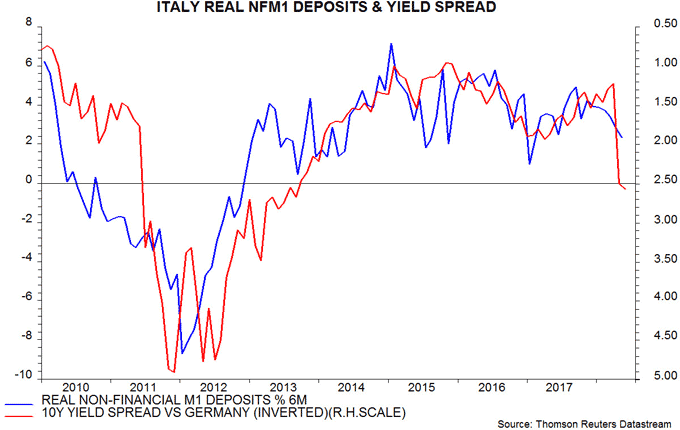
Corporate real M1 deposits, moreover, have slowed sharply recently in Italy and Spain, possibly reflecting a loss of business confidence and an associated reining back of expansion plans – fifth and sixth charts. The Euroland GDP slowdown to date has been driven by Germany and France but risks may now be shifting to the periphery – excluding Greece, where money measures are surging.
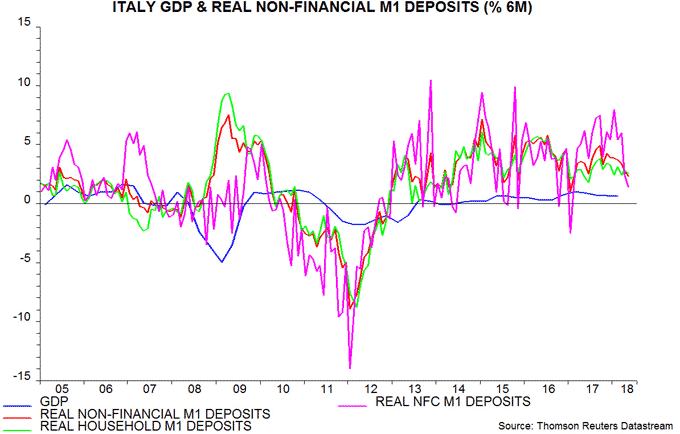
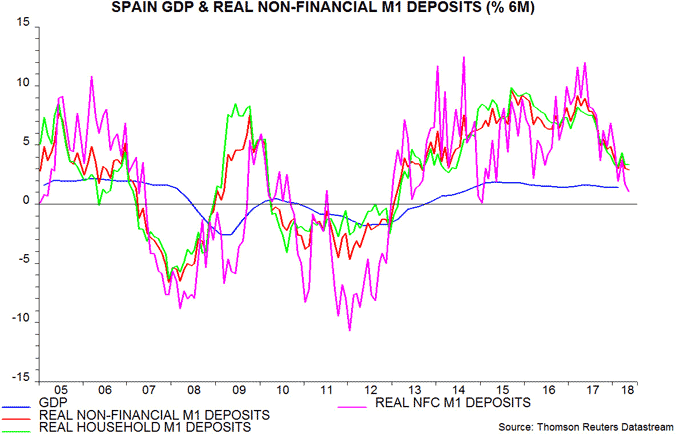




Diesen Beitrag teilen: